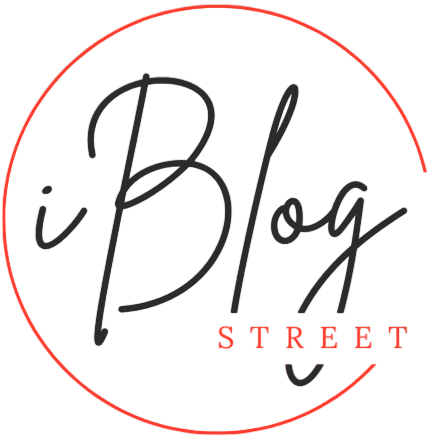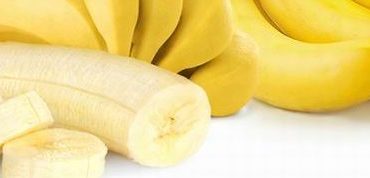[nextpage]
Breakfast is your fuel to start your day. Ideally, your breakfast will satisfy your hunger (after fasting all night), give you energy, and leave you satiated until your next meal. Some foods can do that while others will leave you craving more after an hour so…or lead you to crash after the sugar high wears off. See if you’re starting your days with the wrong fuel.
[/nextpage]
[nextpage]
1. Cereal

In general, grains are a great way to start the day, which is why grains for breakfast are so popular. (That said, it’s best to eat whole grains.) Cereal has been a fast-breaking staple for decades, combining taste, convenience and nutrition from which to launch your activity-full day. But cereals high in carbohydrates and sugar and low in fiber are a flimsy launch pad. After the sugar high, you could be left with mid-morning cravings and moodiness. Choose your cereal wisely, aiming for at least 3 grams of fiber per serving. (Five is even better.) Adding milk and fruit is a bonus for your body and brain. Some nutritious cereals include Cheerios, Kix, Wheaties, Total, Kashi, Puffins, Grape Nuts, Quaker Oatmeal Squares, and Cascadian Farms cereals.
[/nextpage]
[nextpage]
2. Breakfast bars

Read the label. Read the label. Read the label. Breakfast bars are super-convenient and neatly packaged to make eating on the run, or the drive, simple and (nutritious?). Well, that depends on which breakfast bar you buy. Read the label to find out how much sugar the bar has. Also check the carb count and the calories. But carbs and calories don’t make a bar unhealthy. Weigh them against the nutrition. Is there ample protein? (Aim for 5 grams at minimum.) Will the bar you want give you at least 3 grams of fiber to fill your belly and help your digestive track and your heart? Will you be getting some vitamins and nutrients with each bite? Or, are you eating empty calories and fillings that do little to fill you longer than your commute? Some of the bars made by the following companies are good choices: Clif Bars, Odwalla Bars, Kashi, Power Bar Harvest and Luna.
[/nextpage]
[nextpage]
3. Muffins

Muffins are a fun and delicious way to begin the day, especially alongside a cup of coffee or a mug of tea. But let’s be honest: muffins are a way we rationalize eating cake for breakfast. The more toppings (read: chocolate, or powdered or granulated sugar) the farther down on the “healthy scale” the muffin slides. (And the higher the pointer on your weight scale slides.) Grains are a great way to start the day, but make sure you’re eating whole grains, and make sure your muffin has fiber and protein to keep you full for hours. It’s also good to have fruit or tasty veggies in the ingredients. Blueberry muffins are a favorite for good reason: the blueberries are full of flavor and full of healthy antioxidants. Carrot, corn and banana are also good fillers. Nuts inside or on top will give you added energy, fiber, protein, and healthy fats.
[/nextpage]
[nextpage]
4. Doughnuts

Okay, so you want to take the day off of dieting…or eating healthy in general. Enjoy! Doughnuts are packed with sugar, refined (read: unhealthy) carbs, and deep-fried fat, and they taste terrific. The unobvious downside: eating a doughnut for breakfast won’t carry you until lunch. (Unless you eat a bunch which we do not suggest.) One glazed doughnut from a leading national doughnut store delivers a lot of saturated fat, sodium and carbohydrates with only a little dietary fiber. But you’re not eating a doughnut because you expect health bennies, right? Just know that the sugar will give you a spike for a short time, then you may crash and crave more food, or worse, more sugar. If you must eat a doughnut, eat it with a handful of nuts or an egg. These proteins can stabilize your blood sugar and possibly even prevent the hour-after energy crash.
[/nextpage]
[nextpage]
5. Bagel With Cream Cheese

Born in Poland, bagels have been around since the late 16th century. Age, however, does not make them an exceptionally wise breakfast choice. In fact, there are a few holes in the concept that bagels are ideal for breakfast. If the bagel you’re eating is made from refined wheat flour, it’s providing you little to no fiber and very few nutrients and lots of empty calories. About 270 of them. Smear on fatty cream cheese and tack on another 50 calories. Expect your blood sugar to spike…and then drop, leaving you wondering where your energy went. And also wondering why you’re gaining pounds if you eat them frequently enough. Your healthier option is to choose a whole-wheat variety. You’ll get more fiber to keep you full longer as well as more antioxidants. Instead of cream cheese, try spreading peanut butter or avocado.
[/nextpage]
[nextpage]
6. Cup Of Nonfat Yogurt

Yogurt has lots going for it. You get probiotics, potassium and one-fifth the daily recommended value of protein. You also get bone-strengthening calcium. The issue with eating a cup of yogurt is not the food, but the amount of food, you’re eating. Rather, the amount you’re not eating. One cup of plain, nonfat yogurt has 187 calories. Ideally, to break your night-long fast and carry you through the morning, your breakfast should provide 350-500 calories. Fewer than 350 will probably leave you lethargic and hungry, especially if you have active mornings. Adding oatmeal or fruit to your yogurt is a good start, but it is probably worth eating other food as well. If you’re worried about weight, a study showed that people who ate three eggs for breakfast ate fewer calories the next 36 hours than those who ate food other than eggs.
[/nextpage]
[nextpage]
7. Juice

Let’s use apples as an example. How many apples can you realistically eat in one sitting? Two? Three? Would you even want to eat more than three? Now how many cups of apple juice can you drink in one sitting? Three? Four? Five? When you drink the juice of a fruit, you get all the sugar but not all the other nutrients…and, more important, not the fleshy fruit that fills your belly. It’s easy to keep drinking the sugary juice that does not fill you up. Of course, there’s a flipside to every coin. Juicing is a popular way to lose weight, and those who do it know that a glass of freshly prepared fruit juice on an empty stomach can lead to great gains. One or two glasses. Made fresh. And accompanied by another food, like yogurt, for added calories to give you energy, can be a good way to start your day.
[/nextpage]
[nextpage]
8. Fancy Coffee

A coffee-only breakfast is good for a caffeine buzz, but not good for your health. A cup of joe, which has been proven to improve mood, brain function, and performance, also deprives your body (and brain) of valuable nutrients…as well as calories, if that’s all you’re consuming. It has zero calories, but if you add milk and sugar, or if you order a fancy coffee, you’ll get the calories from the extras but you are setting yourself up for the inevitable crash. Not to mention the hunger pangs not long after the last drop. Drinking coffee alone, and on an empty stomach, could mess with your insulin levels, too. This could leave your brain craving fatty, sugary foods, and that can lead you to eat the wrong foods at the wrong time. In the morning, your brain and your body need more than caffeine to get it going. Enjoy your coffee, and along with it, enjoy a low-fat protein and carbohydrates.
[/nextpage]
[nextpage]
9. Bacon

Eating bacon for breakfast is good in that it’s full of protein which will give you energy and satiate your hunger. That’s the end of the good news, because the negative long-term effects of eating bacon drown the positive effects you experience the morning you eat the meat. That’s why this breakfast favorite and companion to eggs or pancakes makes the list. Bacon is high in saturated fat and not good for cholesterol. In fact, one ounce of bacon contributes 30 milligrams of cholesterol, and according to researchers at Harvard, every 1.8 ounces of processed meat you eat raises your risk of suffering heart disease risk by 42 percent. Bacon is a processed meat. Eat it occasionally. Same with sausage.
[/nextpage]
[nextpage]
10. Pop Tarts

Pop-Tarts are fun, tasty and convenient. Nutritious—not really. The package might say “Real Fruit,” but only 10% of the fruit filling is real. The rest is comprised of enriched flour, palm and soybean, artificial colors and sugar, sugar, sugar. 16 grams, to be exact, in each rectangular pastry. (That’s about 4 teaspoons of sugar!) They’re also full of corn syrup and high fructose corn syrup. Then there are the colorful and fun dyes adorning each pastry. The dyes are made of Red 40, Yellow 6, and Blue 1. The dyes are thought to be associated with hyperactivity in children and possibly asthma, skin rashes and migraine headaches. Still sound delicious? Eat ‘em as a treat but don’t trick yourself into thinking you’re eating a balanced, or even nutritious, breakfast. Instead, go for some real fruit in the morning along with a hearty protein food.
[/nextpage]
[nextpage]
11. Pancakes

When you eat pancakes, you get a good source of phosphorus and calcium, not to mention a hearty quantity of carbs, vitamins and minerals. Plus energy! However…pancakes are high in fat, calories and sodium. That’s if you eat them plain. Who does that? Slopping on butter and drowning them in syrup of some sort adds the fun and the flavor…as well as the calorie count and fat intake. Also, traditional pancakes are made with all-purpose flour…which is processed. And in the process of processing the flour, it loses many of its nutrients and gains the ability to cause blood sugar spikes when consumed. Best to eat whole wheat pancakes or save the pancake breakfast for after a workout.
[/nextpage]
[nextpage]
12. Banana

Bananas (and all fruit for that matter) are amazing “inventions.” They are packed with various vitamins that keep so many of our parts working. They also come with nutrients. In the case of bananas: potassium for your muscles and heart, magnesium that provides energy and helps with migraine headaches, and fiber to clean out your digestive tract. And they taste so sweet! But bananas do not make a complete breakfast. They lack calories. One banana delivers just 89 units of this energy. Remember, you want to try to have between 350-500 calories to start your day and reach lunch without snacking, grazing or binging. Unless you’re going to eat four bananas, enjoy your banana alongside another food that will bump up the calories to give your energy a boost.
[/nextpage]
[nextpage]
13. Store-Bought Smoothies

Smoothies are a delicious, nutritious and fruititious (is that even a word?) way to start the day. Brimming with vitamins, minerals and taste, the beverage also offers a cool, creamy texture that goes down, well, smoothly. What’s the problem? If you pick up your smoothie from a store, there is a chance they will add sugar to the already-naturally-sweet drink (to keep you coming back for more). The added sugar increases the calorie count without providing extra nutrition. Plus, energy from sugar does not last. When choosing your smoothie, keep it simple. Fruit, milk or yogurt, and maybe protein. (Try slipping in some greens!) You know exactly what you’re getting. If this will be your whole breakfast, get at least five grams of protein as well as fiber.
[/nextpage]
[nextpage]
14. Bread And Margarine

If you avoid butter, you might be cheating yourself. Butter has had a bad rap since the Sixties, but recent medical trends point to butter as a good source of fat which our bodies need to function, and the fat also provides a feeling of satiety. Margarine, on the other hand, is made with vegetable oil and contains phytosterols, plant-based compounds that have shown to lower bad cholesterol. The issue with margarine is it may contain trans fats, countering the benefits by bolstering the bad cholesterol and weakening the good. If you prefer margarine, read the label to avoid any trans fats. (They are also called partially hydrogenated oil.) It’s best to go for the soft variety. And make sure your bread is whole wheat to get the most nutrition and the most use of the calories.
[/nextpage]
[nextpage]
15. Scones

This bready treat is another sweet way to start the day, especially covered with some yummy jam. Mmmmmm. But wait! One store-bought brand’s scone contained 470 calories. One scone. Almost 500 calories! That’s without any topping. And it won’t be too long until hunger sets in. It’s got a lot of sugar which might give you the energy high at first, but you know what follows. The scones you buy in the store will most likely be made with refined flour, so you lose the fiber and many nutrients. Even if they are added back in, you do not get the full benefit. If you want to eat a scone for breakfast, make it a once in awhile treat.
[/nextpage]
[nextpage]
16. No Breakfast

Skipping breakfast is not a good idea because breaking your fast from sleeping is important. If you skip the first meal to hopefully shed some pounds, you’ll probably wind up eating more—and eating more frequently—later. Depriving yourself of breakfast also deprives your body of vitamins, nutrients and energy to help you to think, to work and to be more productive. Yes, there are those who believe they do better without breakfast. Exceptions to the rule, if they are correct. For the rest of us, enjoy your breakfast…even if it’s on the run, and even if it’s a food listed in this article. Better you eat breakfast than skip it entirely.
[Featured Image Credit: www.newhealthadvisor.com]
[/nextpage]




